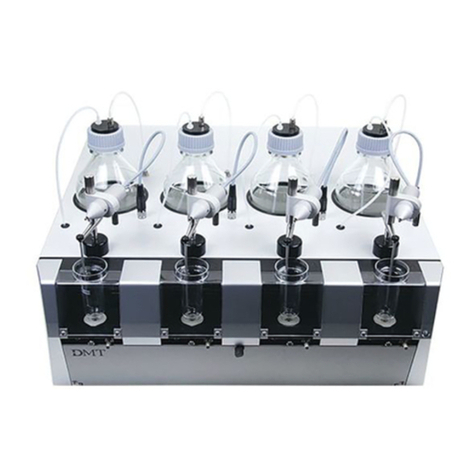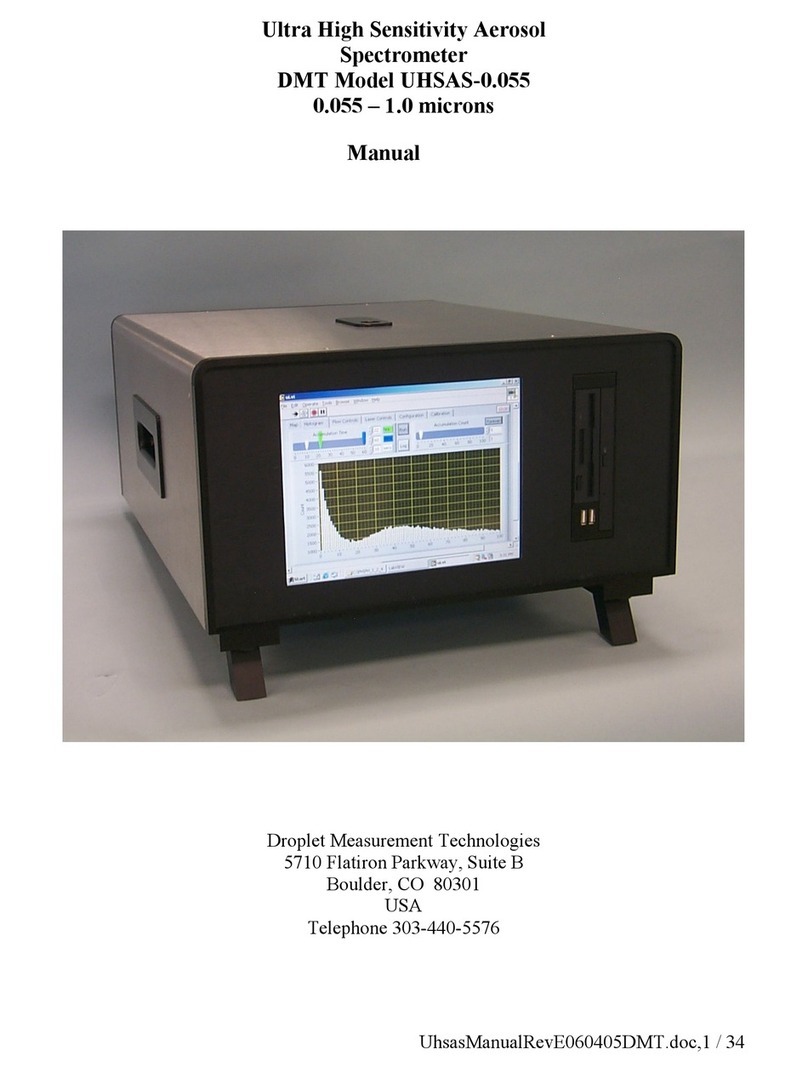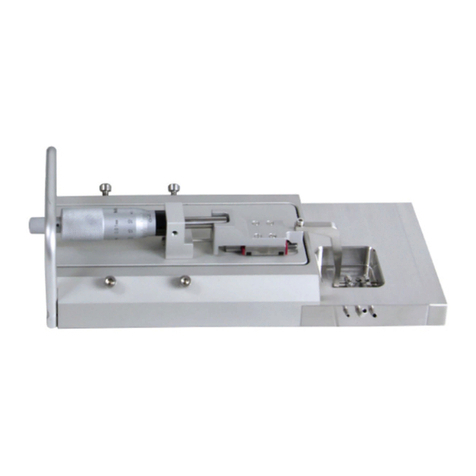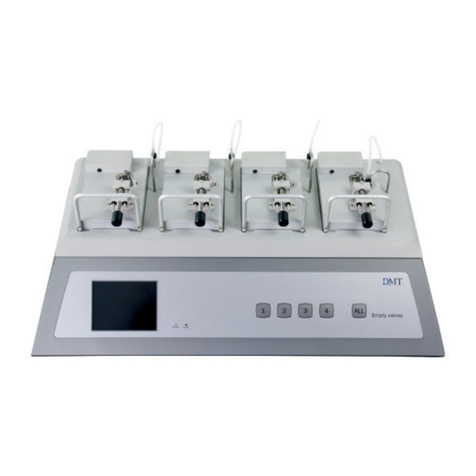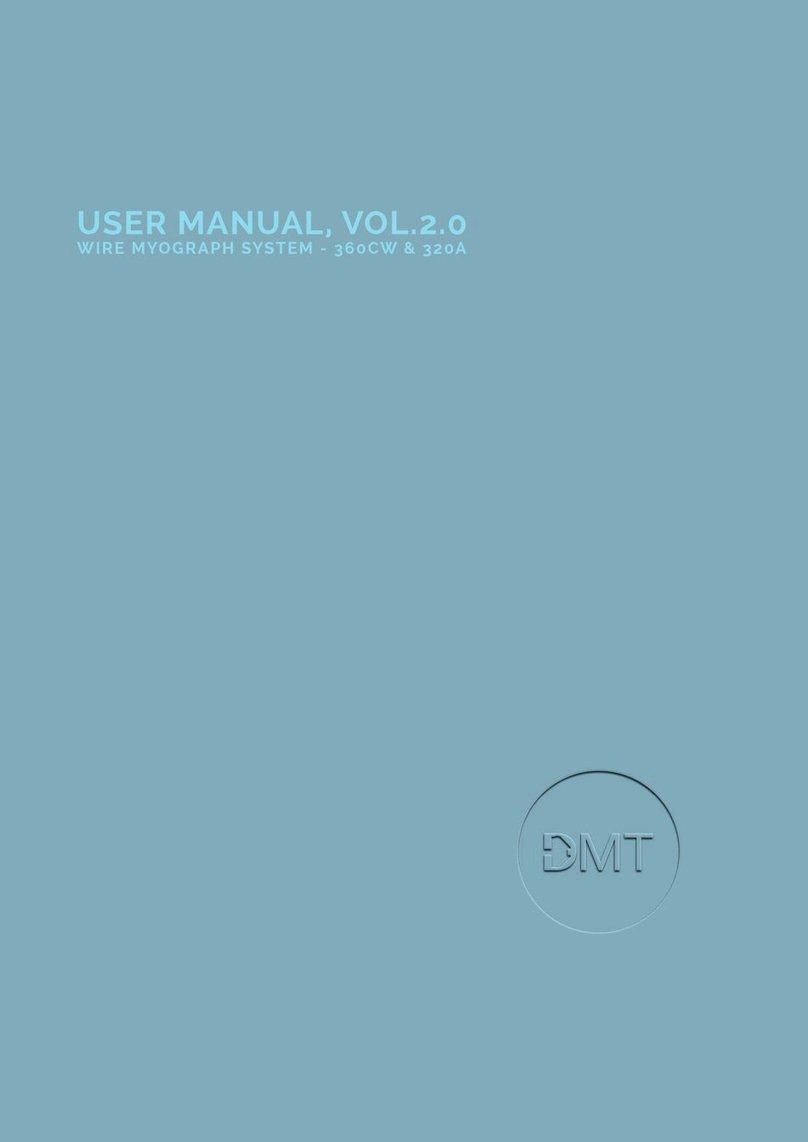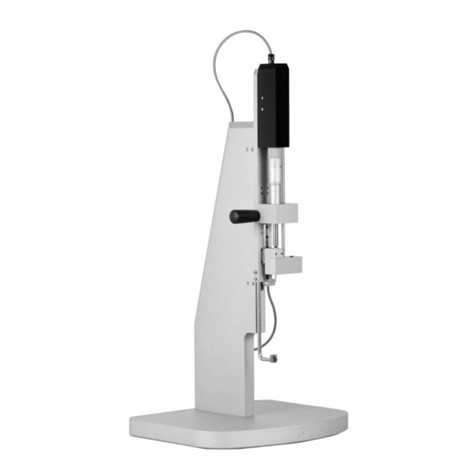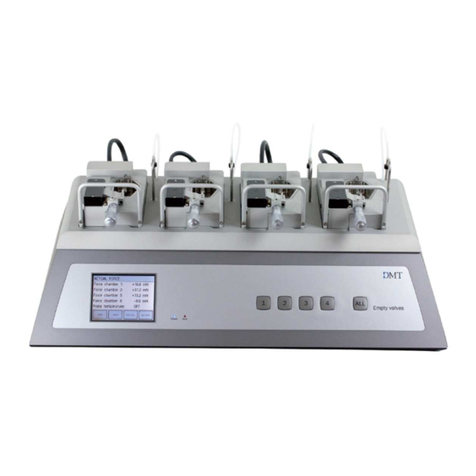
9MUSCLE STRIP MYOGRAPH SYSTEM - 820MS - USER MANUAL
CHAPTER 3 CLEANING AND MAINTENANCE
3.1 Cleaning the Muscle Strip Myograph
DMT STRONGLY RECOMMENDS THAT THE MUSCLE STRIP MYOGRAPH AND SURROUNDING AREAS ARE CLEANED AFTER
EACH EXPERIMENT.
At the end of each experiment, use the following procedure to clean the chambers and supports:
1. Fill the chamber to the edge with an 8% acetic acid solution and allow it to work for a few minutes to dissolve calcium de-
posits and other salt build-up. Use a cotton-tipped applicator to mechanically clean all chamber surfaces.
2. Remove the acetic acid and wash the chamber and supports several times with double distilled water.
3. If any kind of hydrophobic reagents have been used which might be difcult to remove using steps 1 and 2, then try incubat-
ing the chamber and supports with 96% ethanol or a weak detergent solution (i.e. 0.1% triton-100).
4. To remove more resistant or toxic chemicals, incubate the chamber and supports with 1M HCl for up to 1 hour. In excep-
tional cases, incubate the chamber and supports with no stronger than a 3M HNO3solution for about 15 minutes.
5. Wash the chamber and supports several times with double distilled water.
6. If acids such as 1M HCl and 3M HNO3 are used to clean the chambers, make sure ALL surfaces are thoroughly dried after
copious washes with double distilled water. Any residual acid will cause corrosion of the stainless steel chamber and/or
mounting supports.
To prevent the tubing from becoming blocked with buffer salt deposits after an experiment, remove the chamber cover. Fill the
chamber with distilled water and turn on the vacuum and press the vacuum valve for about 10 seconds by holding down the
valve button(s) down. Repeat this at least two times. Press the vacuum valve for about 10 seconds by holding the valve button
down to empty chamber and tubes. Turn off the vacuum and gas supply. Remove any water or buffer remaining in the chamber
or on the tubing using absorbent paper.
IMPORTANT NOTES
BE VERY CAREFUL USING HCL OR HNO3 BECAUSE THESE ACIDS MAY CAUSE EXTREME DAMAGE TO THE STAINLESS STEEL
CHAMBERS AND SUPPORTS, AS WELL AS POSE A SAFETY HAZARD TO THE USER. DO NOT USE BLEACH TO CLEAN THE
CHAMBERS. REPEATED USE OF CHLORINATED SOLUTIONS SUCH AS BLEACH AND HCL WILL CAUSE DAMAGE TO THE
STAINLESS STEEL PARTS OF YOUR MUSCLE STRIP MYOGRAPH SYSTEM. VOID USING THEM IF AT ALL POSSIBLE.
AFTER CLEANING, ALWAYS CHECK THAT THE GREASE AROUND THE TRANSDUCER PIN IS SUFFICIENT TO KEEP THE BUFFER
AND WATER FROM ENTERING THE TRANSDUCER HOUSING SEE FIGURE 3.1.
If red or brown discolorations appear on the chamber sides or on the supports, the following cleaning procedure will work in most
cases:
1. Incubate the chamber and supports for 30 minutes with 2mM T-1210 Tetrakis- (2-pyridylmethyl)-ethylenediamine solution
dissolved in double distilled water.
2. Use a cotton-tip applicator to mechanically clean all the affected surfaces during the last 15 minutes of the incubation period.
3. Wash the chamber and supports several times with double distilled water.
4. Incubate the chamber with 96% ethanol for 10 minutes while continuing the mechanical cleaning with a cotton-tip applicator.
5. Remove the ethanol solution and wash a few times with double distilled water. Incubate the chamber and supports with an
8% acetic acid solution for 10 minutes and continue the mechanical cleaning with a swab-stick.
6. Wash the chamber and supports several times with double distilled water.
7. Dry the surfaces using absorbent paper (i.e. Kim-Wipes) or cotton-tip applicators.
IMPORTANT NOTES
IN EXCEPTIONAL CASES, THE SUPPORTS CLAMP MAY NEED TO BE REMOVED FROM THE CHAMBER AND CLEANED
INDIVIDUALLY TO ASSURE PROPER CLEANING OF ALL SUPPORT SURFACES. NEVER SOAK THE SUPPORTS IN ANYTHING
STRONGER THAN 8% ACETIC ACID FOR EXTENDED PERIODS OF TIME I.E. SEVERAL HOURS OR OVERNIGHT!






